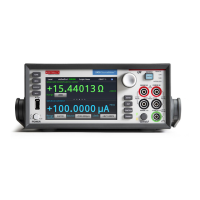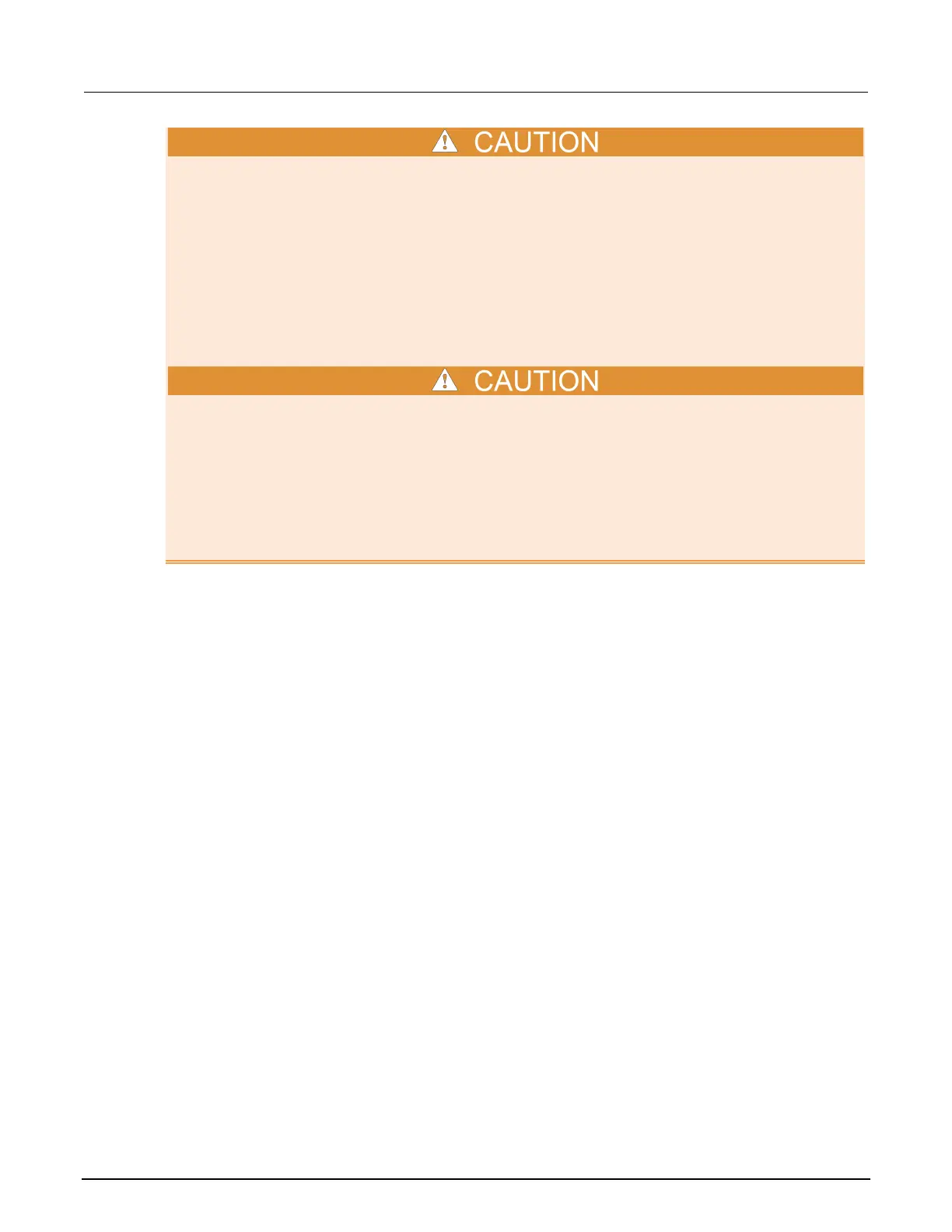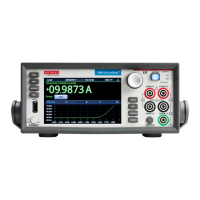4: Source-measure considerations Model 2450 Interactive SourceMeter® Instrument
4-18 2450-901-01 Rev. B/September 2013
If you are using the current source to charge or discharge batteries, the following precautions must
be observed. Failure to observe these precautions could result in instrument damage that is not
covered by the warranty.
Make sure the external voltage never exceeds the voltage limit setting of the current source. This will
cause excessive current to be drawn from the external battery or source.
Be sure to set the output-off state of the current source for high impedance. This setting opens the
output relay when the output is turned off. With the normal output-off state selected, turning the
output off sets the voltage limit to zero. This 0 V source limit condition will cause excessive current to
be drawn from the external battery or source.
Carefully consider and configure the output-off state, source, and limits before connecting the Model
2450 to a device that can deliver energy. Devices that can deliver energy include voltage sources,
batteries, capacitors, and solar cells. Configure instrument settings before making connections to the
device. Failure to consider the output-off state, source, and limits may result in damage to the
instrument or to the device under test (DUT).
When using the current source as a sink, always set the voltage limit and configure overvoltage
protection (OVP) to levels that are higher than the external voltage level. Failure to do so could result
in excessive current flow into the Model 2450 (<105 mA) and incorrect measurements.
Timing information
Measurement settling time considerations
Several outside factors can influence measurement settling times. Effects such as dielectric
absorption, cable leakages, and noise can all extend the times required to make stable
measurements. Be sure to use appropriate shielding, guarding, and aperture selections when making
low-current measurements.
Each current measurement range has a combination of a range resistor and a compensating
capacitor that must settle out to allow a stable measurement.
You can manipulate both the analog filter and the default delays to produce faster response times.
Turn off the analog filter to yield faster settling times. Control the default delays by using the delay
factor multiplier. The default value for delay factor multiplier is 1.0, but adjusting it to other values
result in either a faster or slower response. For example, increasing the delay factor to 1.3 will
account for settling to 0.01 percent of the final value. The commands to manipulate the delay factor
and analog filter are shown below.

